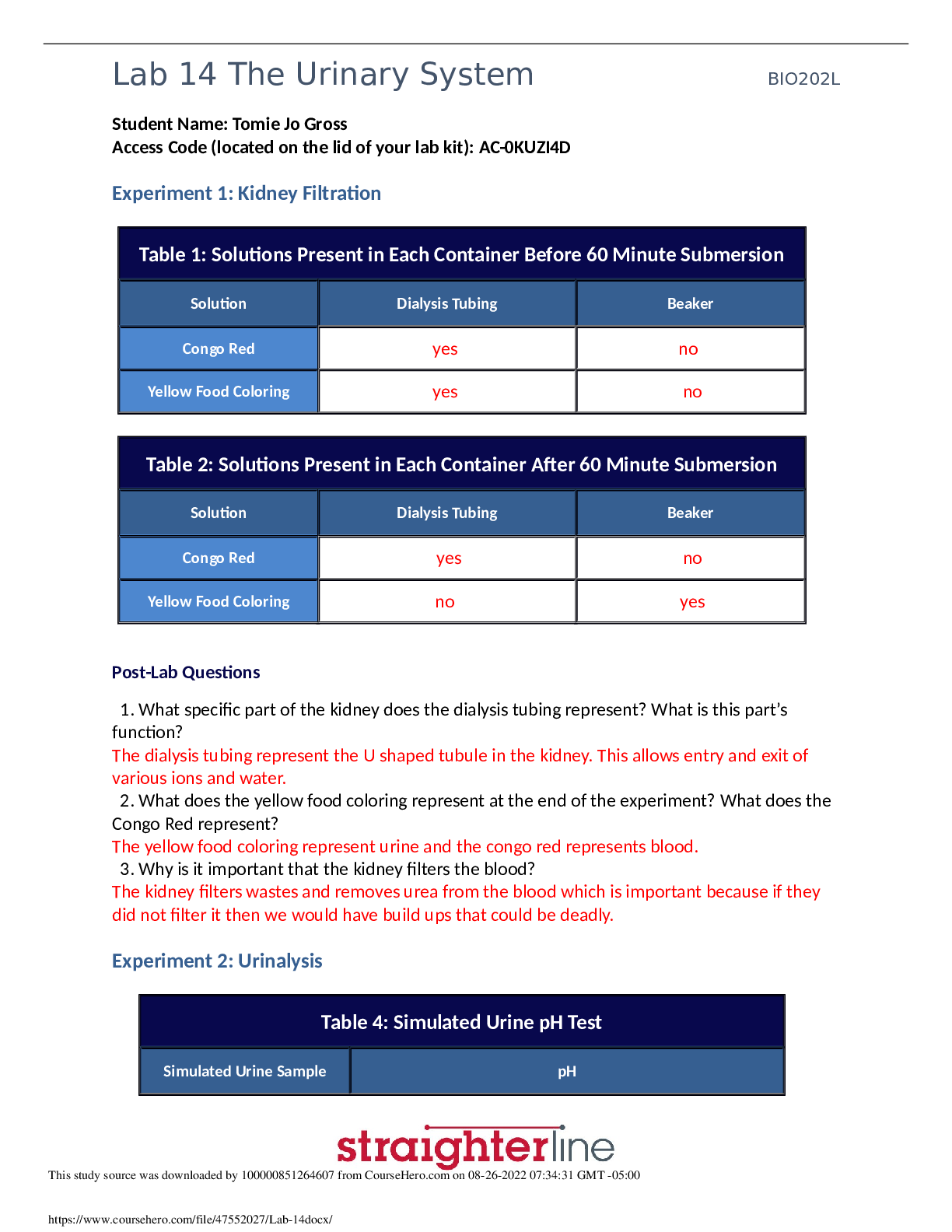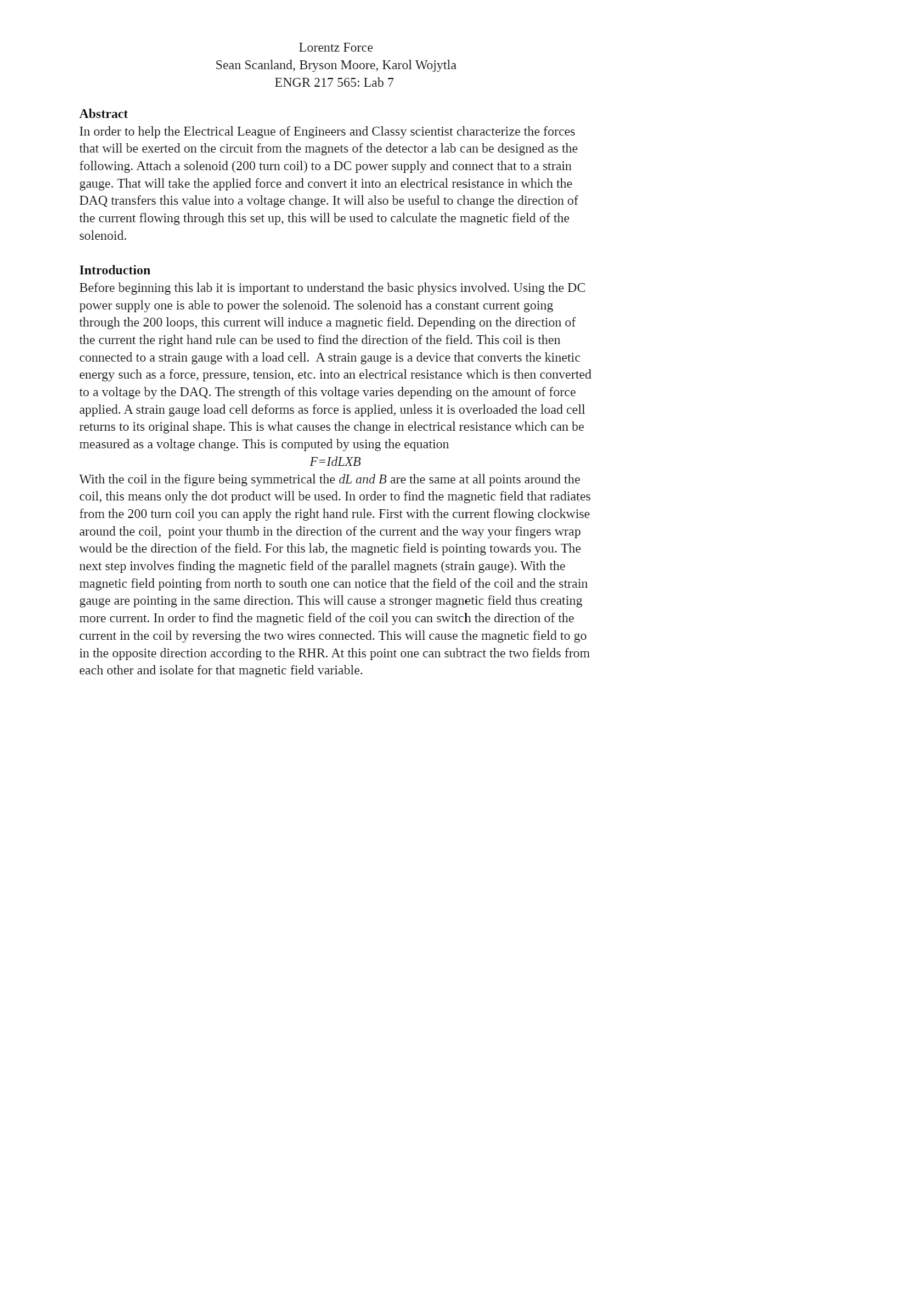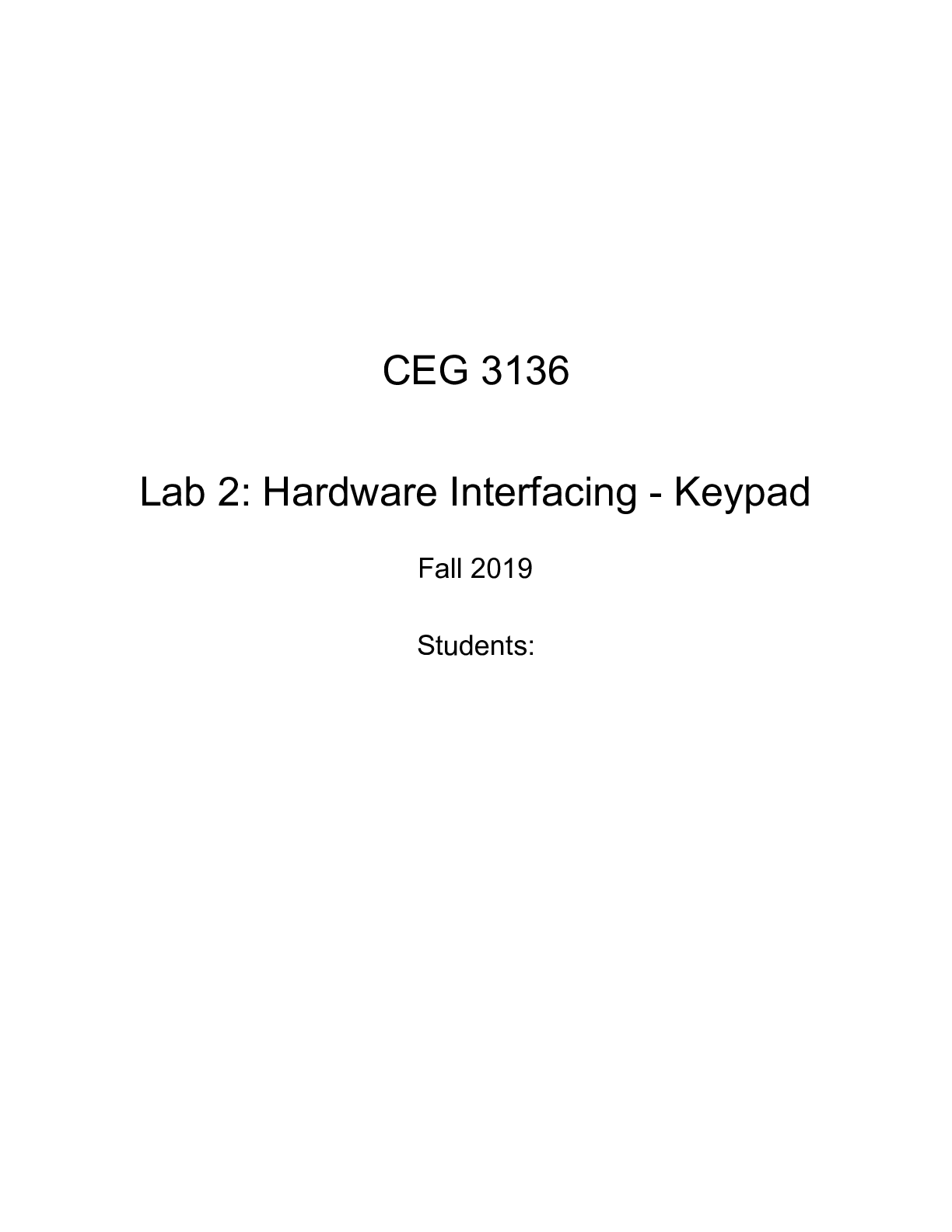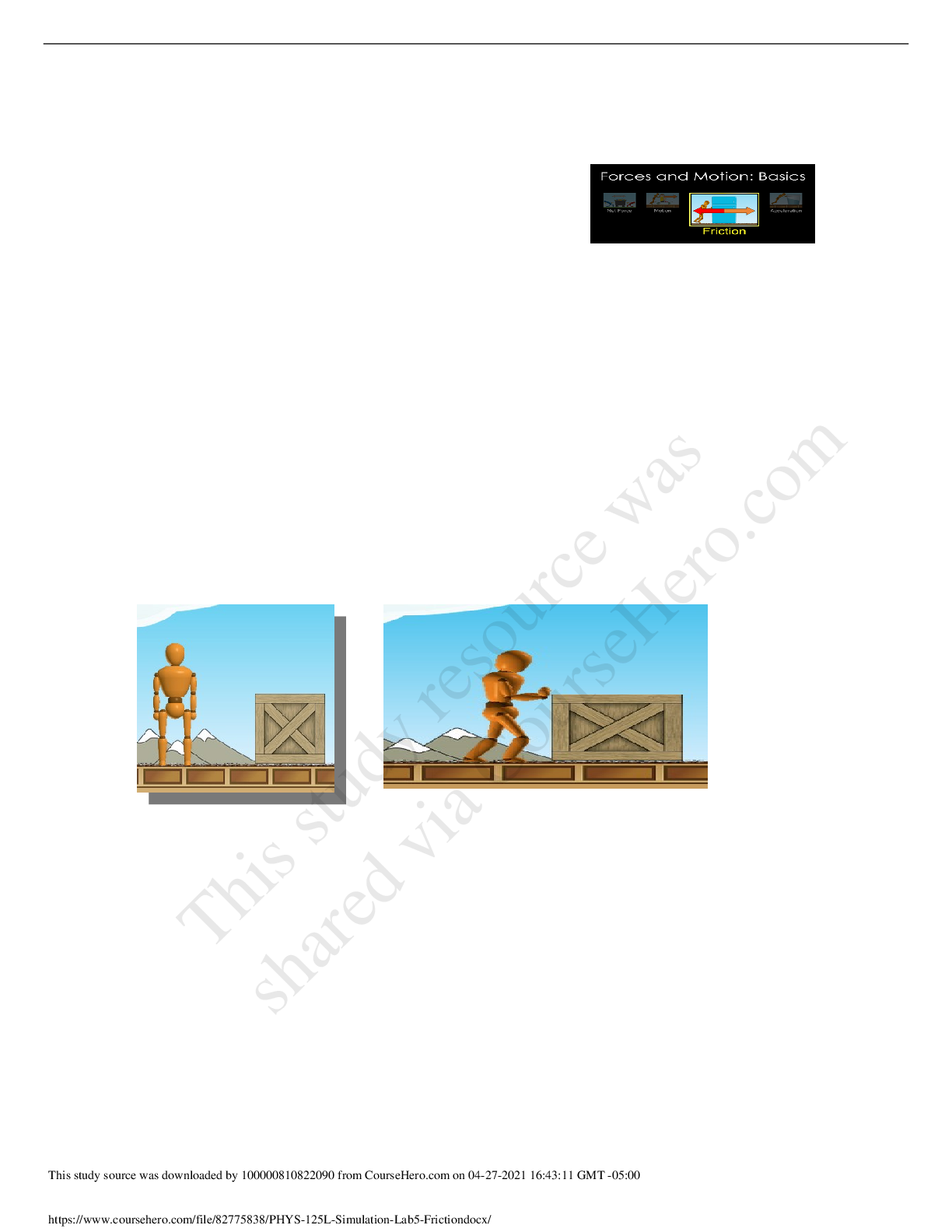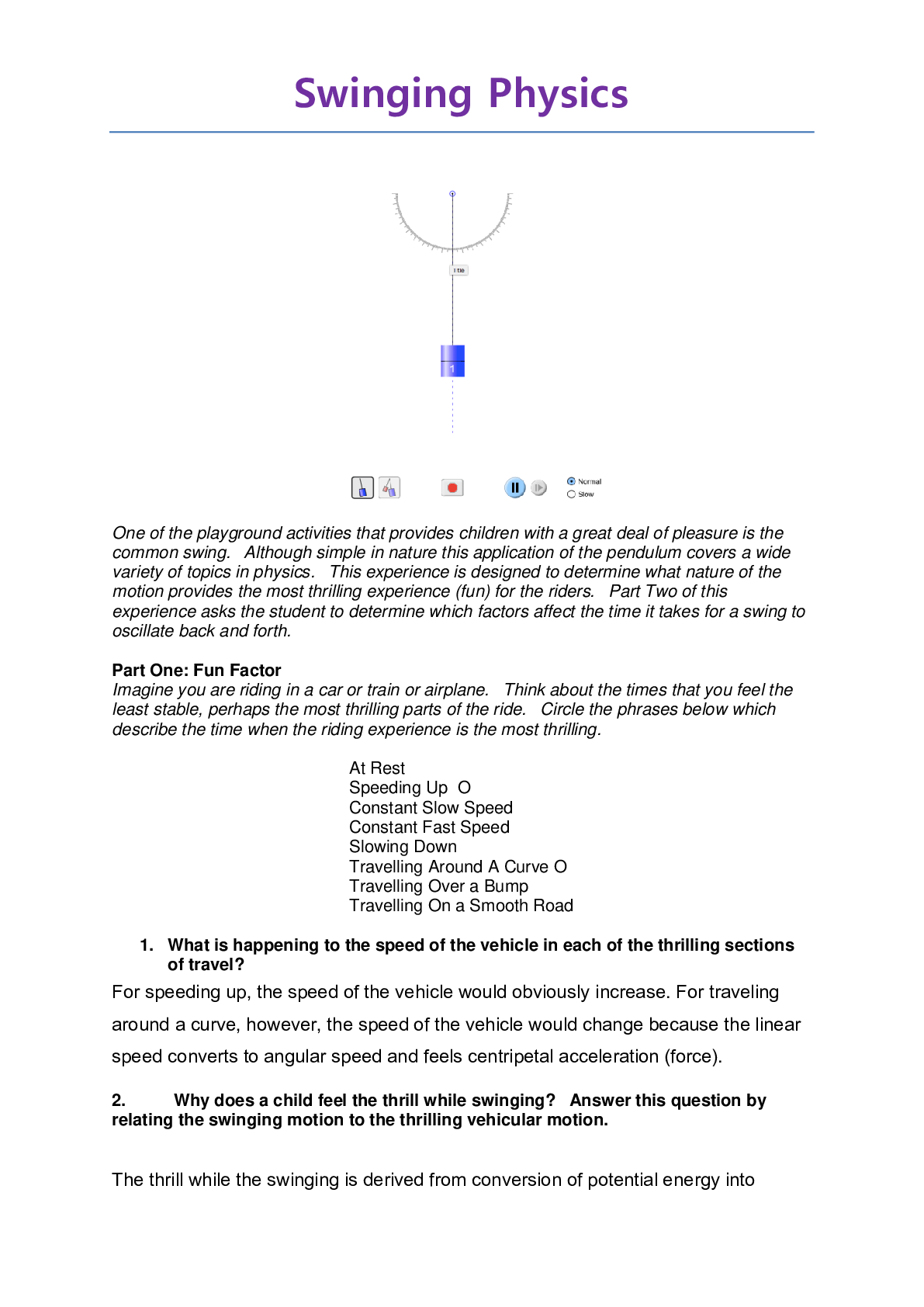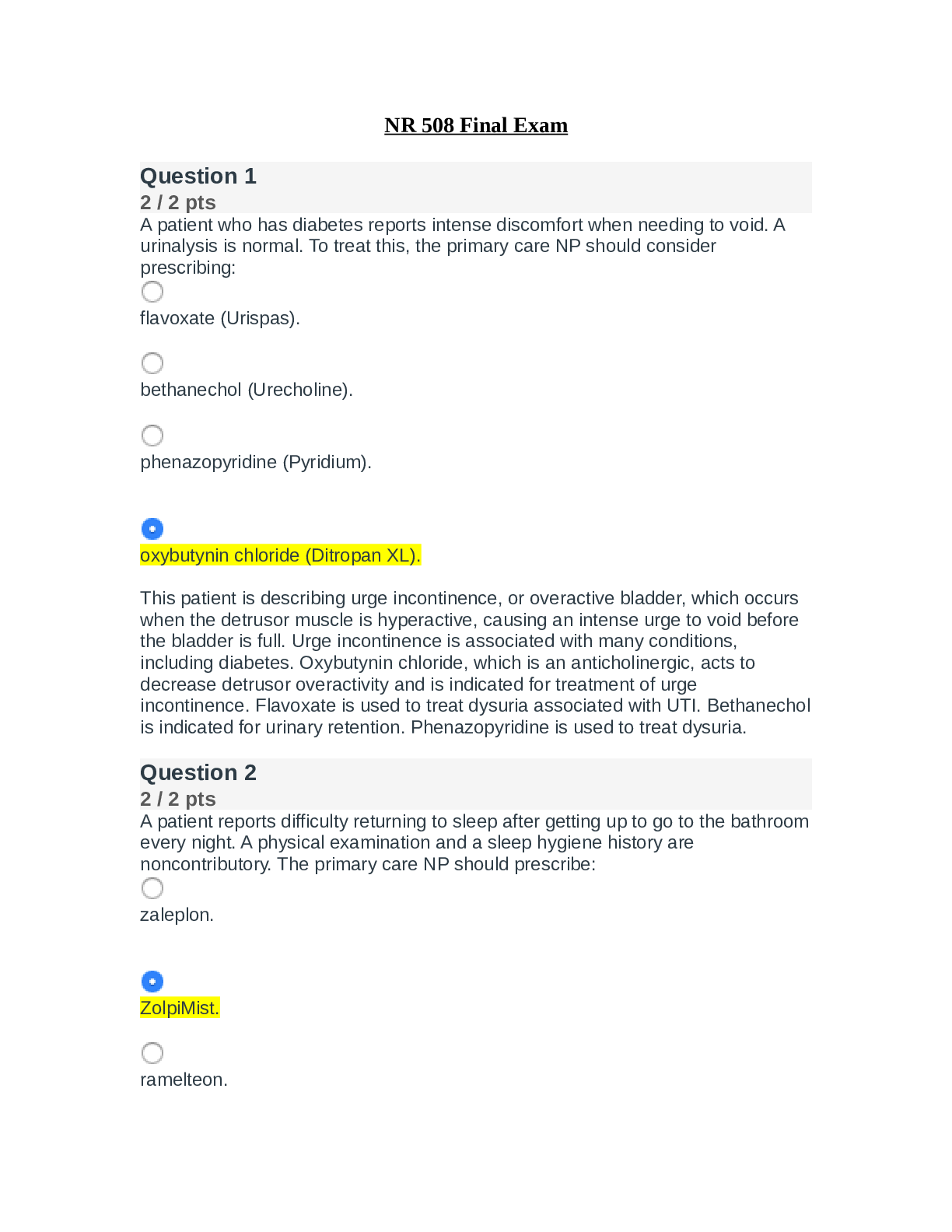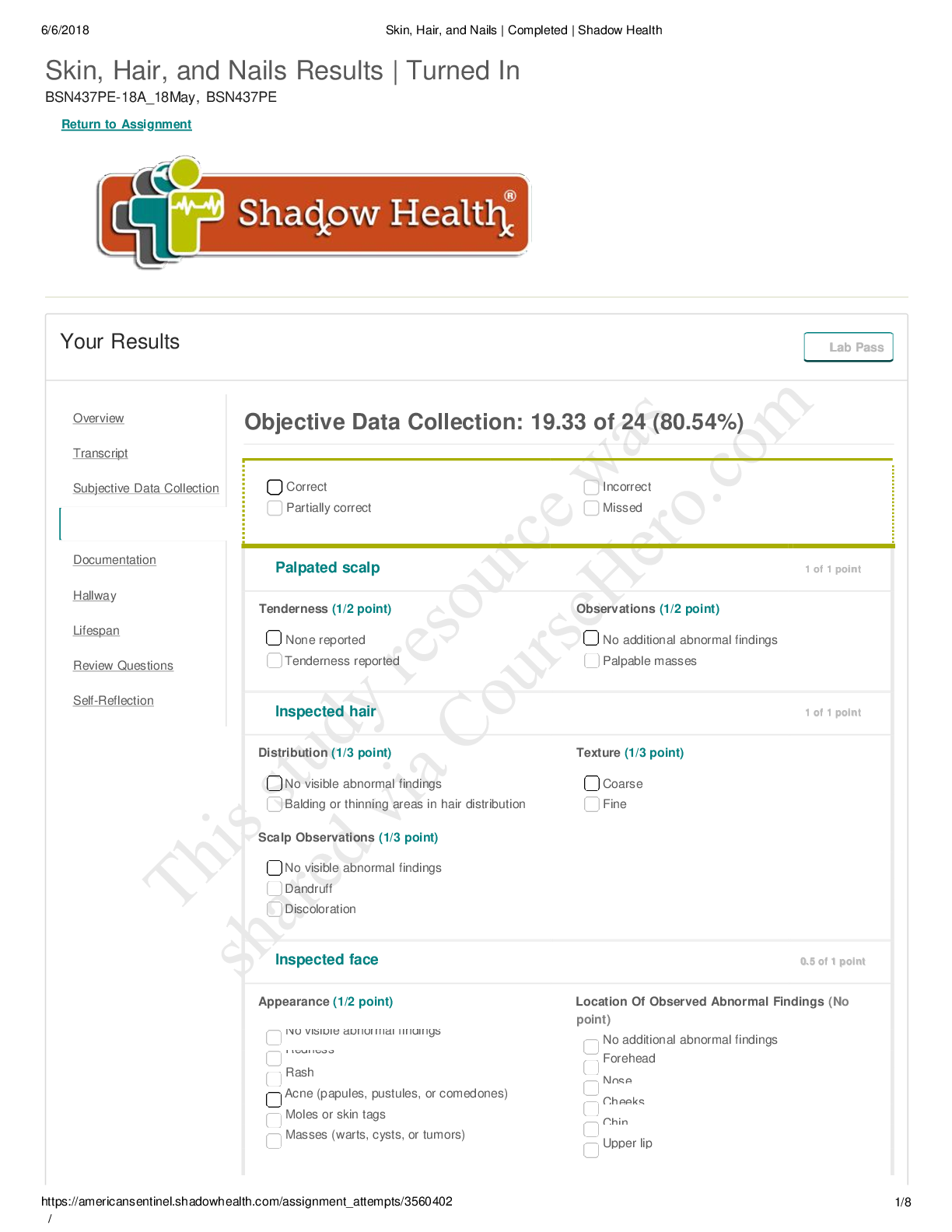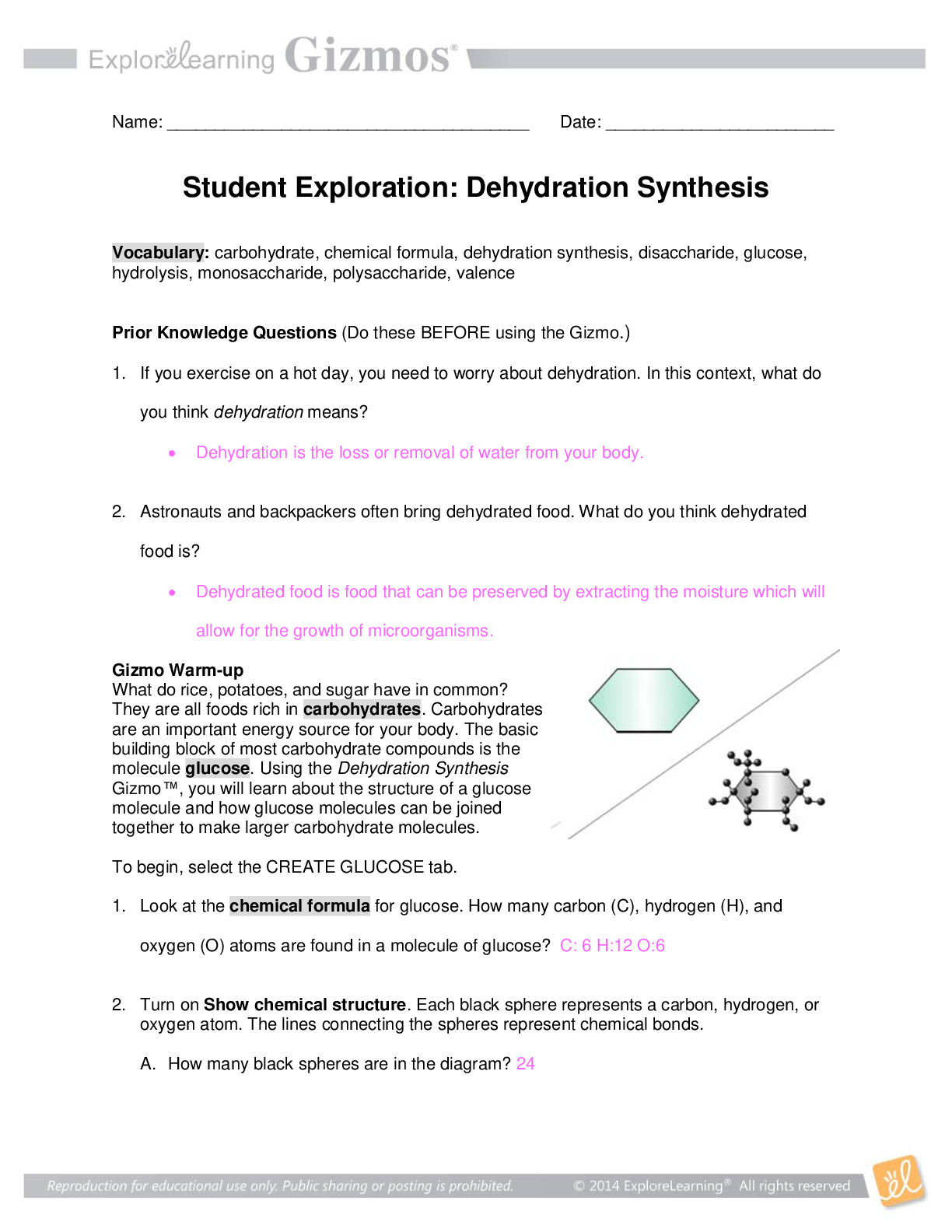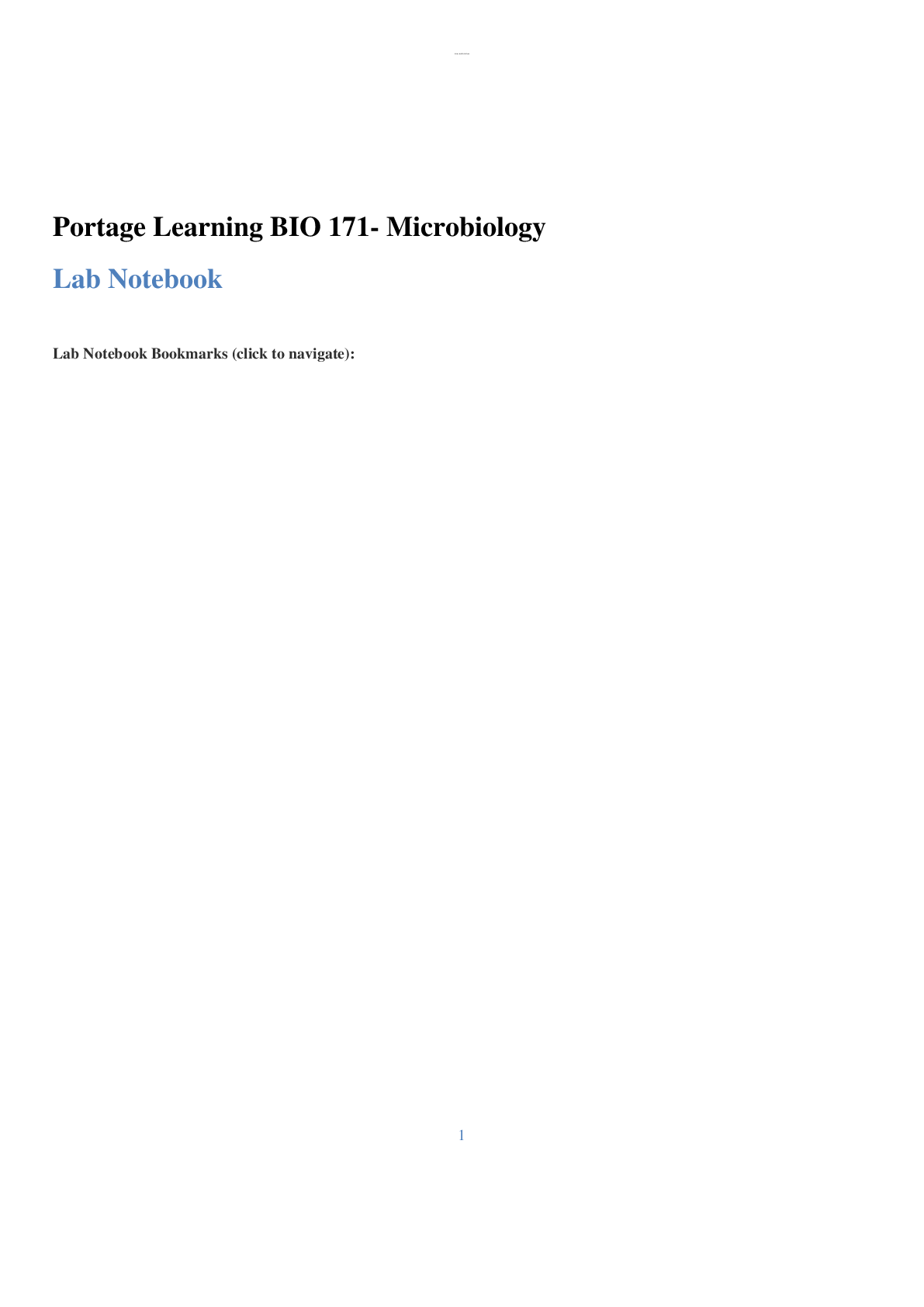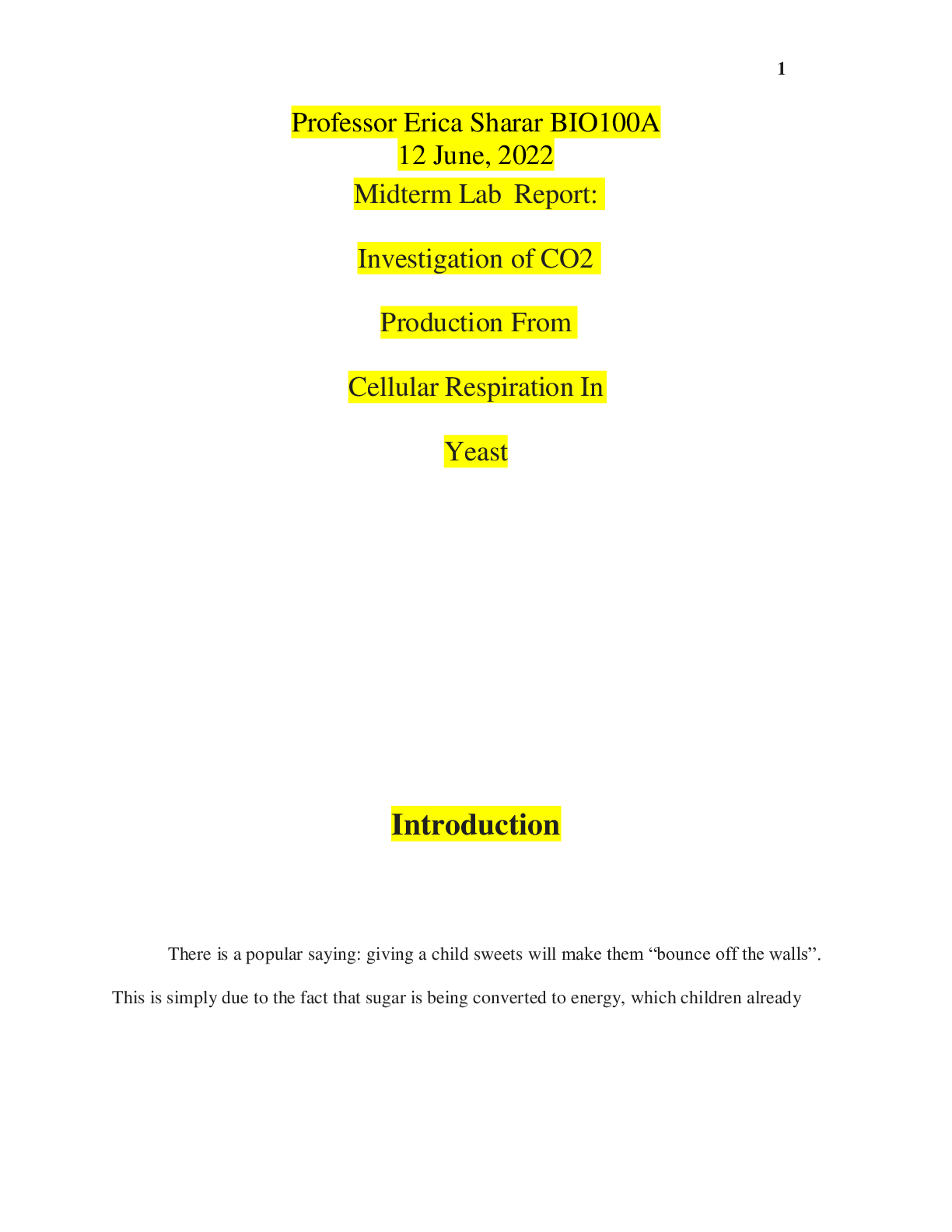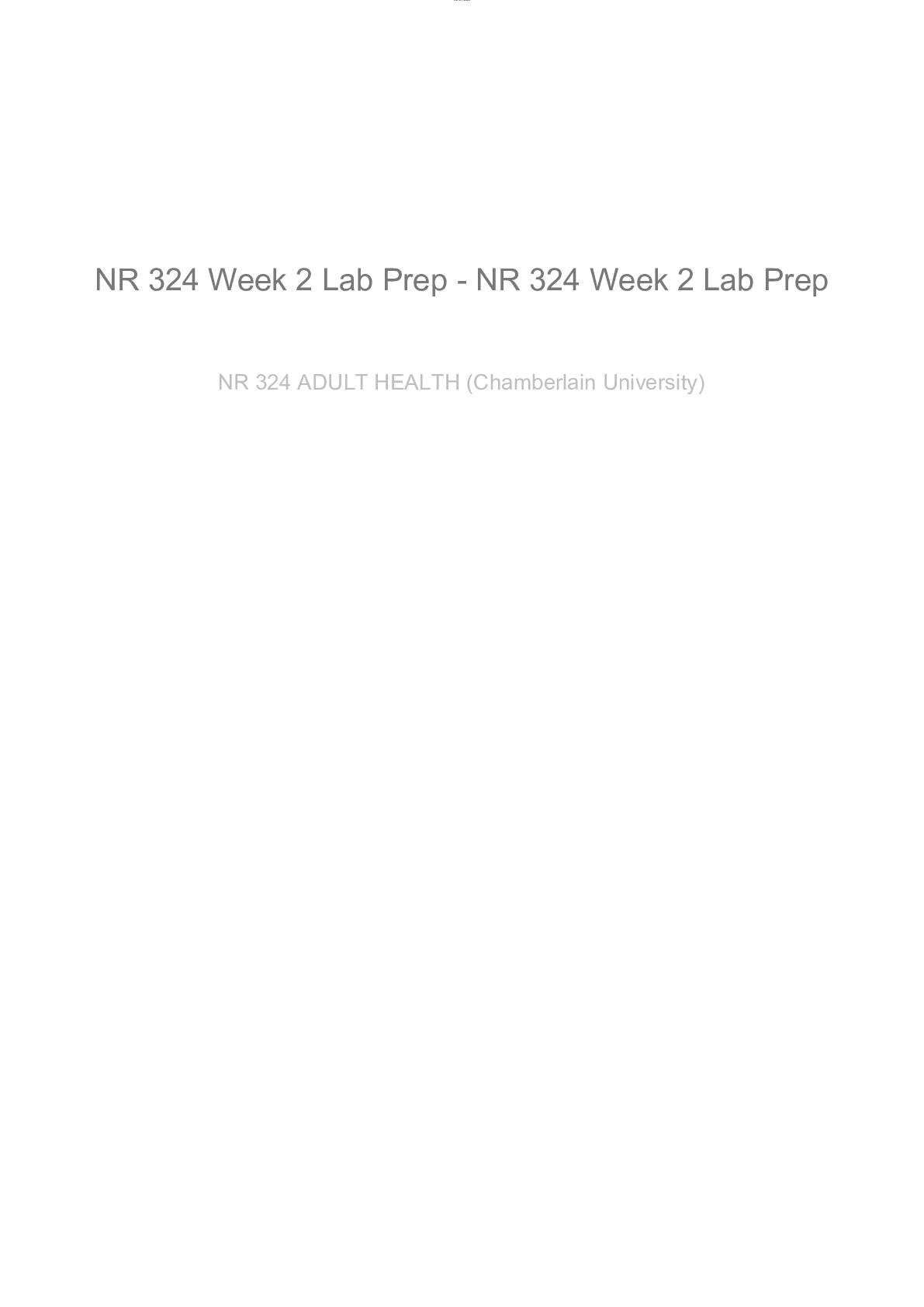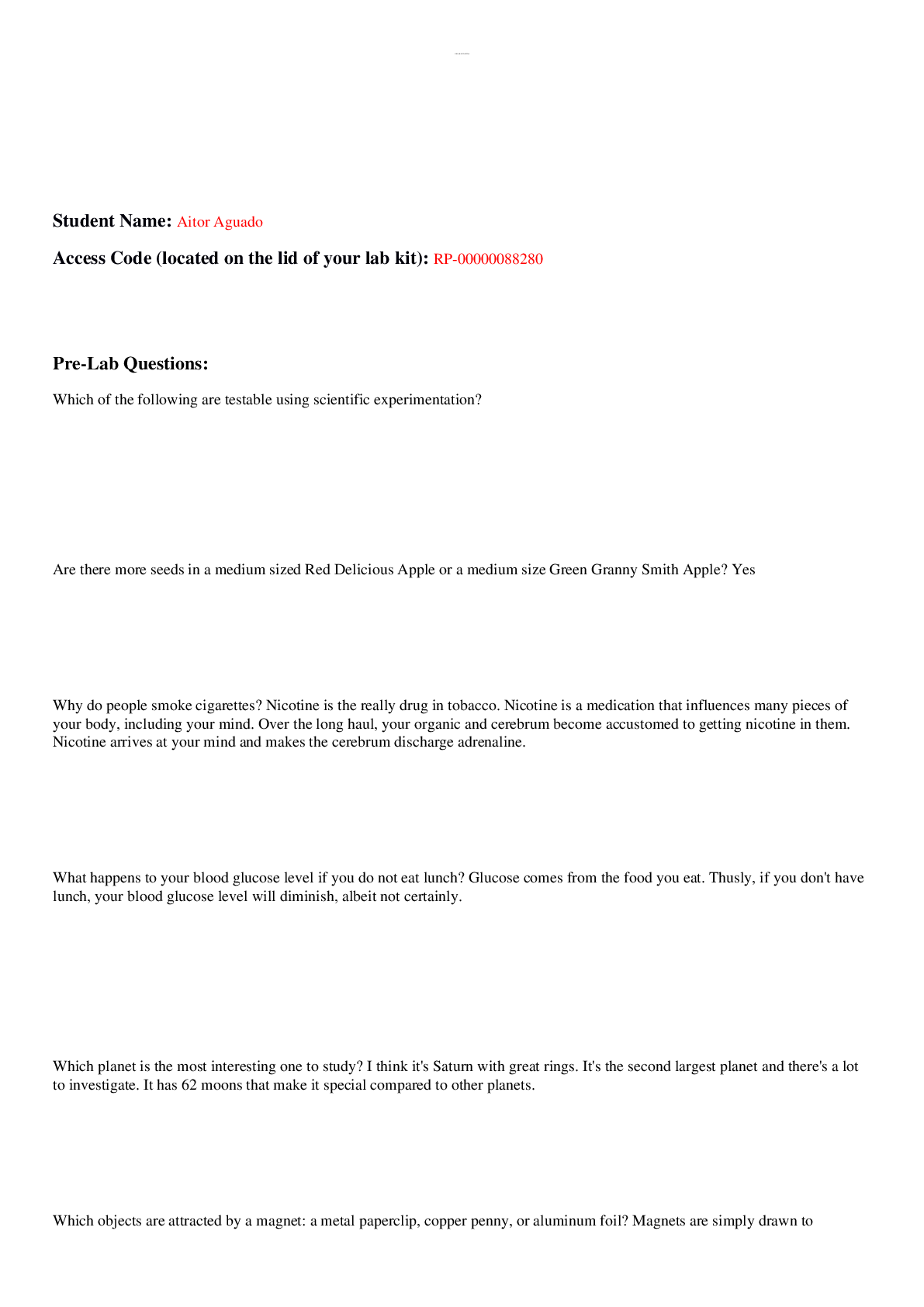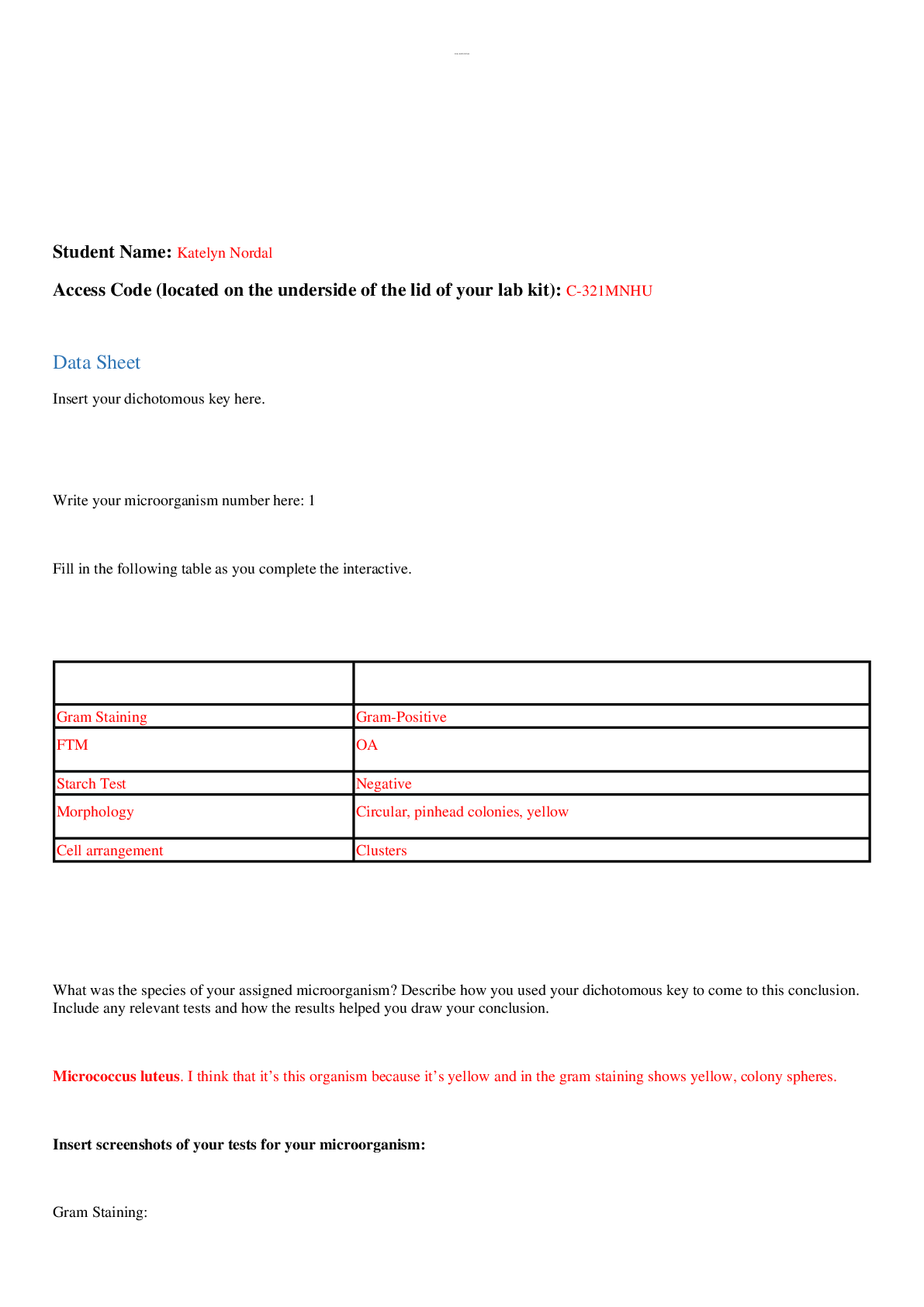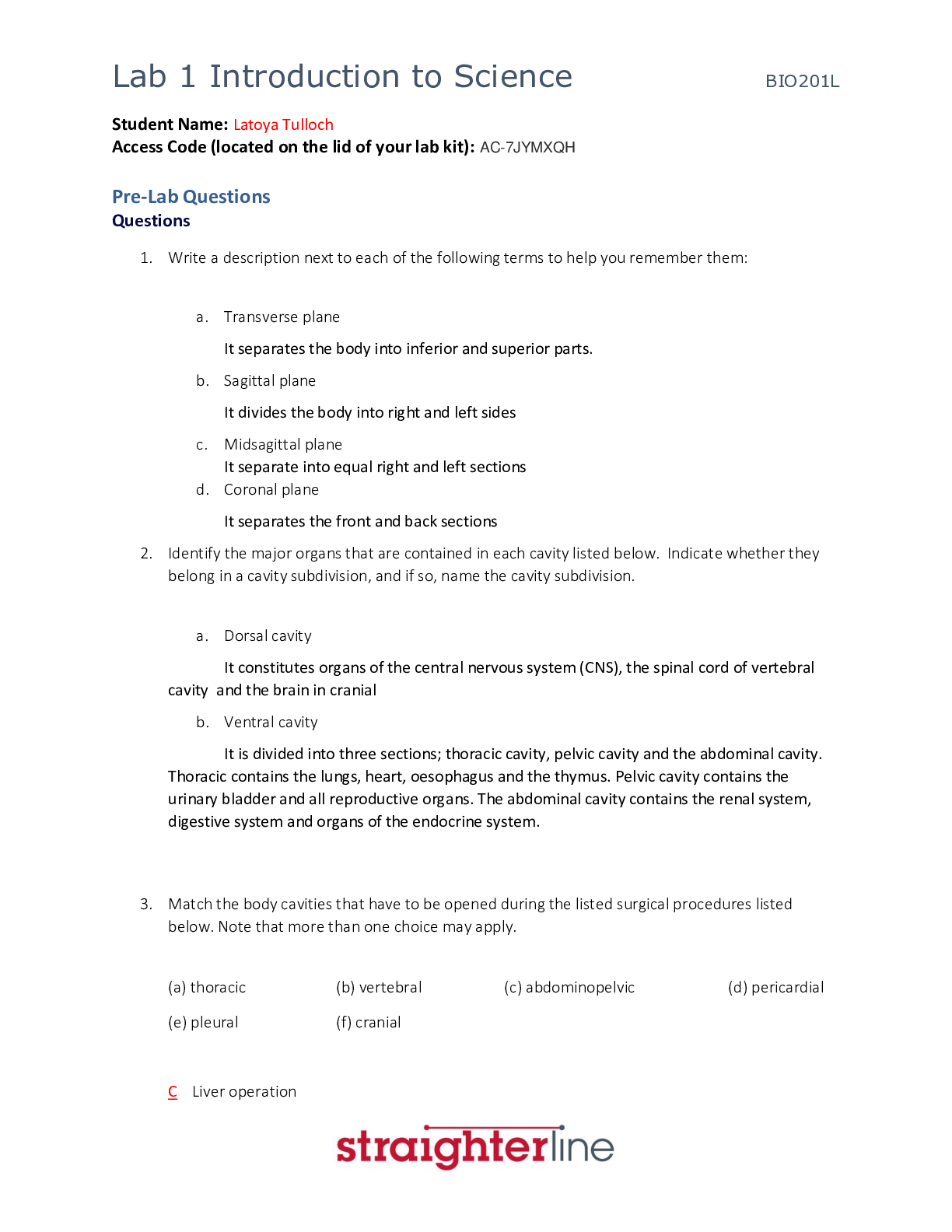Chemistry > Lab Experiment > Diffusion and Osmosis: EXPERIMENT 1. DIFFUSION THROUGH GELATIN, EXPERIMENT 2: DIFFUSION CONCENTRATIO (All)
Diffusion and Osmosis: EXPERIMENT 1. DIFFUSION THROUGH GELATIN, EXPERIMENT 2: DIFFUSION CONCENTRATION GRADIENTS AND MEMBRANE PERMEABILITY and EXPERIMENT 3: OSMOSIS TONICITY AND THE PLANT CELL
Document Content and Description Below
Pre-Lab Questions 1. A concentration gradient affects the direction that solutes diffusion. Describe how molecules move with respect to the concentration. 2. How does size affect the rate of... diffusion? 3. Does polarity affect the rate of diffusion? Explain your answer. 4. If a piece of celery is placed in a glass of pure water, are the celery cells hypertonic, hypotonic or isotonic compared to the water? In which direction will water move? 5. What is the water potential of pure water? 6. Why don’t red blood cells swell or shrink in blood plasma? 7. Research how osmotic power plants work. Summarize what you learned in 1-2 paragraphs. Include references to information sources used. How does Osmotic Power work? (n.d.). Retrieved from https://www.sciencefocus.com/science/how-does-osmotic-power-work/#targetText=How does Osmotic Power work?,of osmosis to generate electricity.&targetText=Osmosis is a common biological,membrane, to balance the concentrations. (n.d.). Retrieved from http://large.stanford.edu/courses/2017/ph240/wulff2/. 8. Experiment 1: Diffusion through Gelatin Data Tables Purpose (What question is this experiment designed to answer?): Claim (What are the results of your experiment?): Evidence (What data did you collect that supports your claim? Explain the meaning behind the data and the calculations.): Post-Lab Questions 1. Create a graph of your results with time (seconds) on the x-axis and distance of diffusion (mm) on the y-axis. There should be one line for each solution on your graph. 2. Which solution diffused the fastest? 3. Does the rate of diffusion correspond with the molecular weight of the solution? Explain your answer. 4. Why do you think there was or was not a correlation between molecular weight and rate of diffusion? 5. What does the rate of diffusion tell you about limitations of cell size? Reflection (Discuss what you have learned by doing this experiment. How have your ideas changed? Do you have any new questions? What connections did you make between the lab and lecture?): The only new question I have is since methylene blue is 319.9g/mol, I figured gravity would play a role in helping the heavier molecule travel further through the gelatin. If that is not true, then it does make sense that acetic acid traveled further since it’s lighter, hence being easier to diffuse. Experiment 2: Diffusion Concentration Gradients and Membrane Permeability Data Tables Table 2: Indicator Reagent Data Table 3: Diffusion of Starch and Glucose Over Time Post-Lab Questions 1. State your hypothesis. 2. Why is it necessary to have positive and negative controls in this experiment? 3. Draw a diagram of the experimental set-up. Use arrows to depict the movement of each substance in the dialysis bag and the beaker. 4. Which substance(s) crossed the dialysis membrane? Support your response with data-based evidence. 5. Which molecules remained inside of the dialysis bag? 6. Did all of the molecules diffuse out of the bag into the beaker? Why or why not? Reflection (Discuss what you have learned by doing this experiment. How have your ideas changed? Do you have any new questions? What connections did you make between the lab and lecture?): Experiment 3: Osmosis Tonicity and the Plant Cell Data Tables Purpose (What question is this experiment designed to answer?): How will salt effect the potato cells regarding osmosis tonicity? Hypothesis (Based on what you’ve learned in the pre-lab materials, write and If/Then statement regarding the outcome of this experiment.): Table 4: Water Displacement per Potato Sample Claim (What are the results of your experiment?): Evidence (What data did you collect that supports your claim? Explain the meaning behind the data and the calculations.): Post-Lab Questions 1. How did the physical characteristics of the potato vary before and after the experiment? Did it vary by potato type? 2. What does the net change in the potato sample indicate? 3. Different types of potatoes have varying natural carbohydrate concentrations. Explain how this may influence the water potential of each type of potato. 4. Based on the data from this experiment, hypothesize which potato has the highest natural carbohydrate concentration. Explain your reasoning. 5. Did water flow in or out of the potato cells in each of the samples examined? How do you know this? 6. Would this experiment work with other plant cells? What about with animal cells? Why or why not? 7. From what you know of tonicity, are the potato cells in hypertonic, hypotonic or isotonic compared to the solutions in the tubes? 8. What do your results show about the concentration of solutes in the cytoplasm in the potato cells at the start of the experiment? 9. If the potato is allowed to dehydrate by sitting in open air, would the potato cells be more likely to absorb more or less water? Explain. 10. Compare and contrast the appearance of the plant cells in Sample A vs. Sample B. 11. What is the explanation for the differences you observed? Reflection (Discuss what you have learned by doing this experiment. How have your ideas changed? Do you have any new questions? What connections did you make between the lab and lecture?): [Show More]
Last updated: 1 month ago
Preview 1 out of 12 pages

Reviews( 0 )
Document information
Connected school, study & course
About the document
Uploaded On
Oct 13, 2020
Number of pages
12
Written in
Additional information
This document has been written for:
Uploaded
Oct 13, 2020
Downloads
2
Views
353

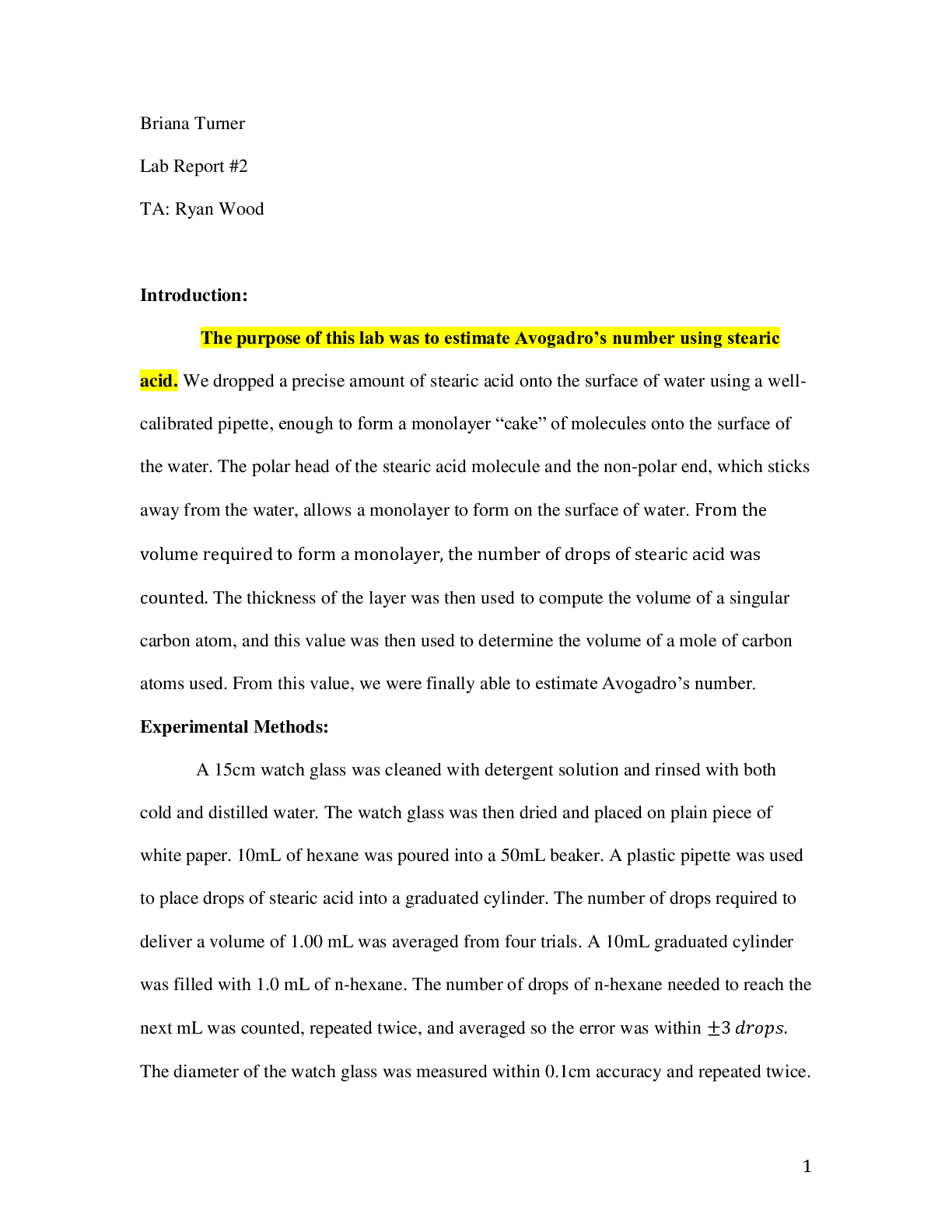
.png)



